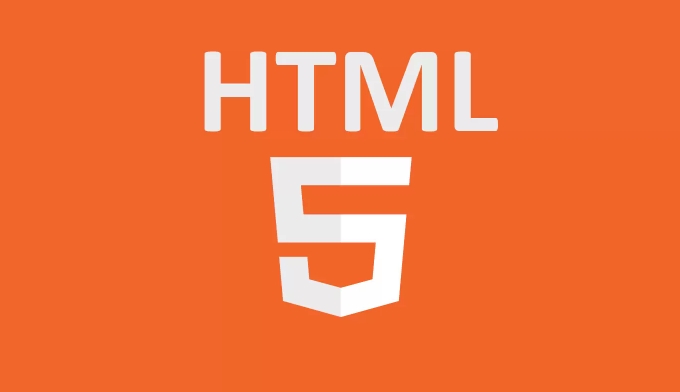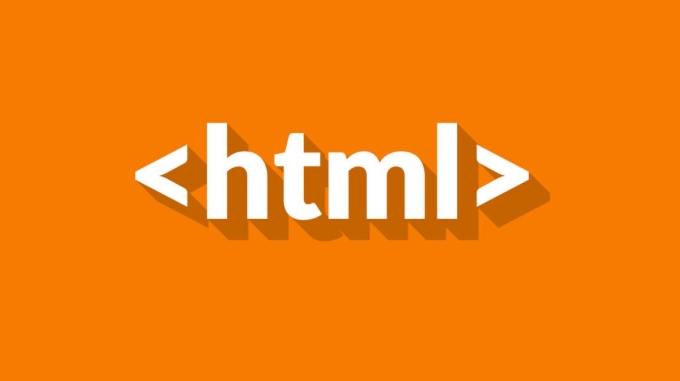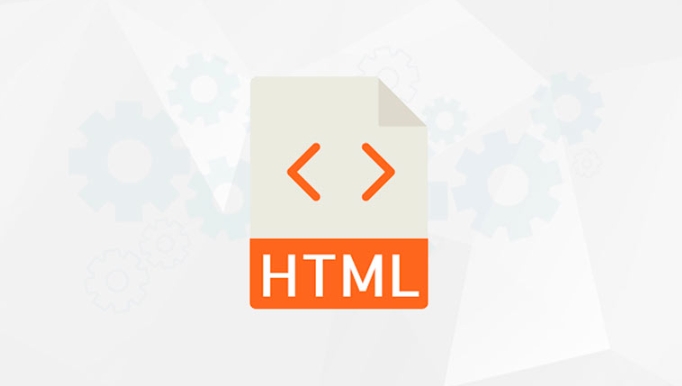How to define an abbreviation or acronym with ?
Use <abbr> tags to mark abbreviations or acronyms in HTML to improve accessibility and semantic structure; 1. <abbr> is a semantic tag, and the abbreviation is explained through title attributes, such as <abbr title="HyperText Markup Language">HTML</abbr>; 2. When using it, make sure that the abbreviations are universal and accurate, and cannot be abused; 3. You can customize the style through CSS, with dotted underscores by default; 4. SEO has limited impact but is positive, avoid nesting multiple <abbr>s, pay attention to case and multi-language support.

Want to correctly mark abbreviations or acronyms on the web page to make the content clearer and more aids friendly? HTML provides <abbr></abbr> tags specifically used to achieve this purpose.
 ?" />
?" /> What is a <abbr></abbr> tag?
<abbr></abbr> is a semantic tag in HTML that defines abbreviation or acronym. Using it not only improves the accessibility of web pages, but also helps search engines better understand page content. For example, when you write "HTML", users may know that this is the abbreviation of hypertext markup language, but screen readers or search engines may not be able to automatically recognize it, so they need to use <abbr></abbr> to explain it at this time.
The basic syntax is as follows:
 ?" />
?" /><abbr title="HyperText Markup Language">HTML</abbr>
In this way, when the user hoveres over "HTML", the browser will display a prompt box showing the full meaning.
How to use the <abbr> tag correctly?
There are several key points to pay attention to when using <abbr> :
 ?" />
?" />- The title attribute must have : this is the key to explaining the abbreviation. Without title, the meaning of using this tag is lost.
- The abbreviation itself should be accurate : don't make abbreviations randomly, make sure the abbreviations you write are generic or context-specific.
- Use appropriately, do not abuse : common abbreviations like "Mr." and "ASAP" can be added, but no need for "you".
- The style can also be customized : by default, the browser will add a dotted underscore to
<abbr>, and you can modify the appearance through CSS.
For example:
<p>The <abbr title="World Health Organization">WHO</abbr> recommendations...</p>
This is not only visually clear, but also easier to understand for those using assistive technology.
Frequently Asked Questions and Notes
Some developers may wonder when to use <abbr></abbr> or whether it will affect SEO. Here are a few simple points:
- SEO has limited impact but positive : Although we cannot expect to improve our rankings by relying on
<abbr></abbr>, it helps in semantic structure optimization. - Do not nest multiple
<abbr></abbr>: For example, if you put another in one<abbr></abbr>, it will easily cause confusion. - Case sensitivity : Some abbreviations are case sensitive, such as "Url" and "URL", and it is recommended to remain unified.
- There is no problem with multilingual support : the title can be explained in any language and does not affect the function.
Let's summarize
Defining the abbreviation with <abbr></abbr> is actually very simple. Just remember to add title and only use it when necessary. Basically that's it.
The above is the detailed content of How to define an abbreviation or acronym with ?. For more information, please follow other related articles on the PHP Chinese website!

Hot AI Tools

Undress AI Tool
Undress images for free

Undresser.AI Undress
AI-powered app for creating realistic nude photos

AI Clothes Remover
Online AI tool for removing clothes from photos.

Clothoff.io
AI clothes remover

Video Face Swap
Swap faces in any video effortlessly with our completely free AI face swap tool!

Hot Article

Hot Tools

Notepad++7.3.1
Easy-to-use and free code editor

SublimeText3 Chinese version
Chinese version, very easy to use

Zend Studio 13.0.1
Powerful PHP integrated development environment

Dreamweaver CS6
Visual web development tools

SublimeText3 Mac version
God-level code editing software (SublimeText3)
 Server-Side Rendering with Next.js Explained
Jul 23, 2025 am 01:39 AM
Server-Side Rendering with Next.js Explained
Jul 23, 2025 am 01:39 AM
Server-siderendering(SSR)inNext.jsgeneratesHTMLontheserverforeachrequest,improvingperformanceandSEO.1.SSRisidealfordynamiccontentthatchangesfrequently,suchasuserdashboards.2.ItusesgetServerSidePropstofetchdataperrequestandpassittothecomponent.3.UseSS
 A Deep Dive into WebAssembly (WASM) for Front-End Developers
Jul 27, 2025 am 12:32 AM
A Deep Dive into WebAssembly (WASM) for Front-End Developers
Jul 27, 2025 am 12:32 AM
WebAssembly(WASM)isagame-changerforfront-enddevelopersseekinghigh-performancewebapplications.1.WASMisabinaryinstructionformatthatrunsatnear-nativespeed,enablinglanguageslikeRust,C ,andGotoexecuteinthebrowser.2.ItcomplementsJavaScriptratherthanreplac
 Performance-First State Management with Zustand
Jul 25, 2025 am 04:32 AM
Performance-First State Management with Zustand
Jul 25, 2025 am 04:32 AM
Zustandisalightweight,performantstatemanagementsolutionforReactappsthatavoidsRedux’sboilerplate;1.Useselectivestateslicingtopreventunnecessaryre-rendersbyselectingonlytheneededstateproperty;2.ApplycreateWithEqualityFnwithshalloworcustomequalitychecks
 What is the purpose of the rel attribute in a link tag in HTML?
Aug 03, 2025 pm 04:50 PM
What is the purpose of the rel attribute in a link tag in HTML?
Aug 03, 2025 pm 04:50 PM
rel="stylesheet"linksCSSfilesforstylingthepage;2.rel="preload"hintstopreloadcriticalresourcesforperformance;3.rel="icon"setsthewebsite’sfavicon;4.rel="alternate"providesalternateversionslikeRSSorprint;5.rel=&qu
 Frontend Build Time Optimization
Jul 23, 2025 am 03:37 AM
Frontend Build Time Optimization
Jul 23, 2025 am 03:37 AM
The core of optimizing front-end build time is to reduce redundant work, improve processing efficiency, utilize caches and select efficient tools. 1. Use TreeShaking and code segmentation reasonably to ensure that it is introduced on demand and dynamic import reduces the packaging volume; 2. Reduce unnecessary loader processing, exclude node_modules, upgrade loaders and relax the scope of Babel translation; 3. Use the caching mechanism to speed up repeated construction, enable Webpack cache, CI cache and use offline installation; 4. Upgrade toolchain, such as using Vite, esbuild or Rollup to improve the construction speed, although there is migration cost, it has significant effect.
 What is the purpose of the anchor tag's target attribute in HTML?
Aug 02, 2025 pm 02:23 PM
What is the purpose of the anchor tag's target attribute in HTML?
Aug 02, 2025 pm 02:23 PM
ThetargetattributeinanHTMLanchortagspecifieswheretoopenthelinkeddocument.1._selfopensthelinkinthesametab(default).2._blankopensthelinkinanewtaborwindow.3._parentopensthelinkintheparentframe.4._topopensthelinkinthefullwindowbody,removingframes.Forexte
 Understanding and Implementing OAuth 2.0 on the Front-End
Jul 25, 2025 am 04:31 AM
Understanding and Implementing OAuth 2.0 on the Front-End
Jul 25, 2025 am 04:31 AM
When using OAuth 2.0, PKCE authorization code process should be adopted instead of implicit process, avoid storing tokens in localStorage on the front end, priority is given to processing refresh tokens through the back end, and secure integration is achieved using a trusted authentication library to ensure the security of front-end applications.
 Angular Material and Component Libraries
Jul 23, 2025 am 01:17 AM
Angular Material and Component Libraries
Jul 23, 2025 am 01:17 AM
How to get started with AngularMaterial? First run ngadd@angular/material to install and configure, secondly, introduce components such as MatButtonModule as needed, then import and use components in the module, and finally add global styles and fonts; the advantages of AngularMaterial include a unified design language, rich components, good documentation and community support, and strong customization; other alternatives include NG-ZORRO, PrimeNG, ClarityDesign and IonicforAngular, and when choosing, you should consider comprehensively based on project needs and team familiarity.







